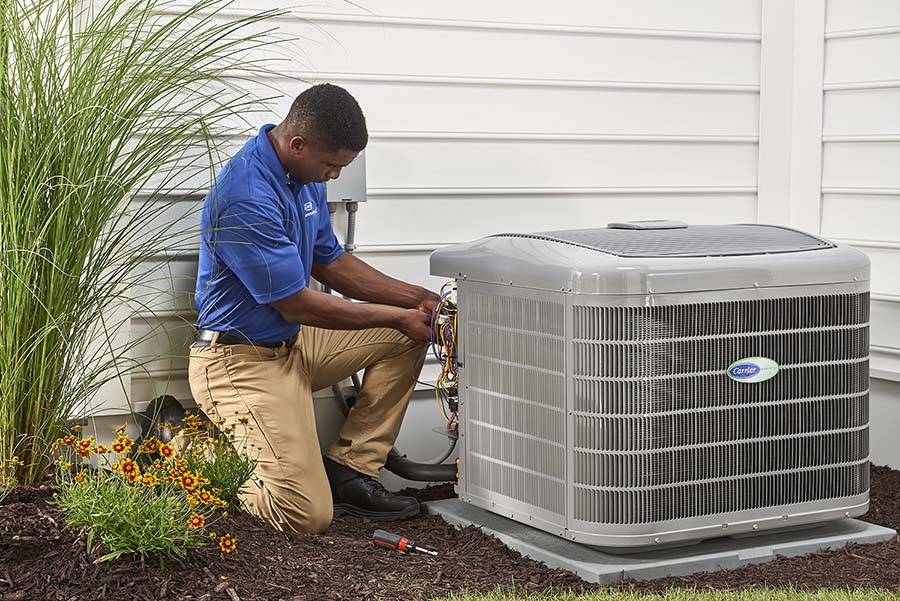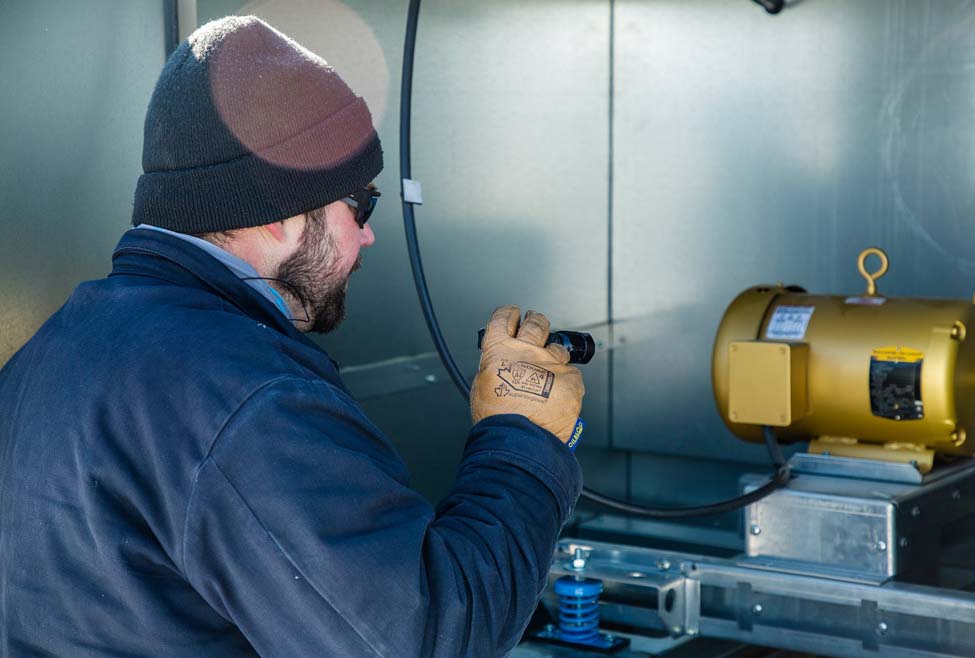Despite supply chain issues making it difficult to obtain some types of HVAC equipment and components last year, sales appeared to be fairly robust. According to the Air-Conditioning, Heating, and Refrigeration Institute (AHRI), the 2021 year-to-date combined U.S. shipments of central air conditioners and air-source heat pumps increased 9.3% over 2020, and shipments of gas warm air furnaces were up 19.6% for the same time period.
Heating, Air-conditioning & Refrigeration Distributors International (HARDI) also reported strong increases, with average annual sales growth for the 12 months through December 2021 clocking in at 23.6%. That was a very healthy showing, especially when compared to the strong sales from the prior year, said Brian Loftus, market research and benchmarking analyst at HARDI.
“The record sales growth is a result of strong end market demand and the pass through of the extraordinary price increases,” he said.
Manufacturers are hopeful the supply chain issues will get better this year and that sales will continue to grow as the economy slowly returns to normal after the pandemic. However, the Russian invasion of Ukraine may cause further stress on the supply chain, as exports of raw materials such as natural gas, crude oil, and metals from that region may contract, and sanctions on Russia could cause the price of these commodities to rise even more.
Executive vice president, Daikin Applied
Supply and Demand
The economy looks like it will be fairly strong in 2022, based on current activity, as well as what is in the pipeline, said Jeff Drees, executive vice president at Daikin Applied.
“Part of the reason is that we are in the midst of reindustrialization in the U.S., and the build-out of domestic manufacturing capabilities will continue to fuel economic growth,” he said. “There are lingering concerns such as commodity price increases and supply chain hurdles, but they shouldn’t decrease demand or suppress a thriving economy.”
Another reason why the economy is doing so well is that the public and private sectors are currently in sync and firing on all cylinders, creating unprecedented demand, said Drees. He does not see that slowing anytime soon, given the infusion of stimulus money and rapid expansion in sectors such as data centers and domestic manufacturing, the latter being fueled by efforts to bring the supply chain closer to home.
“The challenge will be meeting the demand, because there are still a variety of issues impacting production, from chip shortages to logistics constraints,” he said. “We expect those bottlenecks to ease throughout 2022, however, so the industry is poised for growth.”
Supply chain issues will, indeed, continue to be a challenge in the short term, as the pandemic caused disruptions in several ways, and the lingering effects will be felt through the spring, said Todd Nolte, managing director of replacement components and product management - residential HVAC at Carrier.
“Our supply chain and resource availability have been steadily returning to normal, but we’ll continue to monitor the situation and ensure we have multiple action plans at the ready to be able to meet our customers’ needs,” he said. “We expect the challenges that we faced in 2021 to continue into 2022 to some extent with inflation and supply chain headwinds remaining at the forefront. Even with these pressures, we expect to see organic growth in our HVAC business in 2022.”
One of the fastest-growing segments Carrier expects to see is K-12 schools, due to an influx of American Rescue Plan (ESSER) funds from Congress that are to be allocated towards improving air quality. Nolte said they have seen an uptick in demand for products and solutions as schools look to create healthier, safer, and more productive environments for students and staff.
Cost increases of materials across the industry will also continue to be a concern, especially as they relate to controls and the ongoing chip shortage — that will likely not clear until the second half of the year, said Doug Bougher, director of applied sales at LG Electronics USA. In addition, trained technician labor remains at a premium, but so far, he said these challenges have not been negatively affecting demand.
“We see the economy continuing to be strong as it relates to LG’s HVAC business,” noted Bougher. “Residential and multifamily segments both should continue their strong growth into 2022, as many of the market conditions that affected 2021 are still place. Commercial and hospitality may also start to come back from the pandemic-related downturn but likely not yet back to their pre-COVID levels.”
While all markets are expected to enjoy continued growth this year, Emerson sees the commercial markets rebounding at a higher rate than residential, as well as over 2021 rates, said Brandy Powell, vice president and general manager of residential air conditioning at Emerson. The reason is that residential markets had peak growth earlier as the initial lockdowns eased in 2021, and while the market continues to grow, Emerson believes it will be at lower rates in 2022.
“As residential new housing settles into more normal growth rates, and inflation impacts household economics, we see these impacting the residential market to slower growth rates,” she said. “The commercial market is strong, with strong leading indicators of nonresidential GFI, nonresidential structures, and AIA billings suggesting sustained strength through 2022 and into 2023.”
Opportunities and Obstacles

NEXT-GEN EQUIPMENT: The Cold Climate Heat Pump Challenge will help accelerate the development of next-generation heat pumps for extremely cold climates. (Courtesy of Carrier)
IAQ and electrification are two of the major trends in the HVAC industry right now, and they are expected to help propel growth this year. As such, LG anticipates strong demand for its electrified systems, including its dedicated outdoor air system (DOAS), VRF, and inverter scroll heat pump chillers.
“These product lines support customers’ efforts to reduce reliance on fossil fuel heating, while meeting the environmental focus set in place by local codes,” said Bougher. “All of these products assist in pushing the industry forward, while maintaining a wide operating range that helps meet common design conditions in the U.S.”
As part of the electrification trend, the Department of Energy’s Cold Climate Heat Pump Challenge will help accelerate the development of next-generation heat pumps that meet consumer comfort and efficiency needs in extremely cold climates, said Nolte.
“Heat pumps use electricity as their only fuel source, creating significant opportunities for carbon emissions reductions compared to traditional gas heating appliances,” he said. “Through collaboration with utility and state partners, it will lead to the development of incentive programs to promote market adoption. If these goals are met, the long-term market potential is significant.”

SALES INCREASE: The use of high-efficiency air handlers, rooftops, and chillers for data centers and other burgeoning applications should continue to increase this year. (Courtesy of Daikin Applied)
As for IAQ, Daikin Applied expects to see growing interest in these products, especially technologies that meet the dual goals of better IAQ and decarbonization. Drees added that use of high-efficiency air handlers, rooftops, and chillers for data centers and other burgeoning applications should also continue to climb.
“One of the emerging and significant opportunities is developing products and strategies to make data centers more sustainable,” said Drees. “This requires technologies that are highly efficient, compact, and use less water. There is a greater dependence on air-cooled technologies, which will spur growth and innovation in this specific product category.”
As for obstacles in the industry, besides the supply chain woes, the labor shortage continues to be the number one issue for everyone throughout the supply chain channel. These issues are difficult to solve, but Powell contends that coming up with creative measures and actions will present opportunities for growth in the industry.
“For example, both commercial and residential contractors are incorporating apprenticeship programs to get participants ready sooner to handle jobs on their own,” she said. “They are also investing in initiatives such as training, job flexibility, and tiering of pay grades to keep existing employees. Some owners are looking at ways to understand single-parent technicians, who want a career path that enables them to set and achieve goals. There is also a trend of hiring more women in the trades, recruiting early in the school system, and investing in the education and values of the employees.”
Bougher agrees that one of the bigger challenges in the industry right now is finding and retaining talent, adding that “LG is always looking for experienced professionals to join our team.” He noted that as a result, contractors may resort to outsourcing specialized tasks to applied representatives and/or distributors that often have the expertise the contractor may be lacking.
“As an industry, we need to take steps to show why HVAC is a preferable vocation to attract talent — at the plant level and up through the C suite,” said Drees. “Daikin’s focus continues to be on creating an inclusive culture that encourages everyone to come together as a team that welcomes unique ideas, perspectives, and backgrounds. Cultivating that type of environment is key to recruiting and retaining the next generation of professionals.”
Carrier is also on a mission to show America's young adults that HVAC is an essential business and will always be important, said Nolte.
“We have created a number of materials for our contractors to use in their local recruiting efforts including brochures, graphics, and social media content. We also established an educational website, thisishvac.com, where potential recruits can learn more about the Tech Up initiative and the HVAC industry, as a whole.”
Even with supply chain challenges and labor shortages, manufacturers remain upbeat about 2022 and beyond.
“Optimism abounds because of the megatrends — IAQ, decarbonization, and digitalization — that are moving the industry forward,” said Drees. “These will continue to be areas of emphasis for organizations in the U.S. and across the globe. And I expect the demand for HVAC solutions that address these trends to remain strong for the next several years.”



Report Abusive Comment